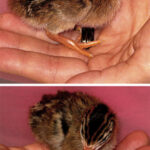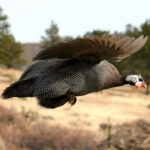This is part one of a multipart series on the World’s most disgusting parasitic diseases. A traveler may become the victim of something eating them alive.
Guinea Worm – 3 Foot Round Worm In Your Leg
This worm, whose scientific name is Dracunculiasis is a common parasite in Southern and Central Africa. This disease is contracted by drinking infected water. Humans are not the first host for this parasite, which first infects tiny organisms called water fleas. However, when water fleas are ingested by the any human who does not first boil the water they drink, the water flea is totally digested by stomach acid and the Guinea Worm Larvae are released to complete their life cycle and ravage the human body.
The adult Guinea Worm can be from a foot to three feet long. As an adult worm they lodge in the muscles of the legs. Upon maturity they make an open sore in the leg through which they release larvae as the person enters the water. This allows them to re-infect other hosts, who come to the same body of water to drink.
The process to remove them from their human hosts is long and unpleasant. They can be surgically removed but if the adult is pulled apart or cut it will re-infect the host with many new worm larvae making the situation worse.
The preferred treatment is to place the victim in water and tie a string around the head of the Guinea Worm as it emerges to deposit its larvae into the water. The string is generally tied around a leather lace or belt worn around the waist of the human victim. Every few minutes the worm emerges slightly from the leg. The worm is wrapped around a stick over a period of weeks or even months until the entire worm is extracted intact.
Over 30,000 people are infected with this disease annually.
Bot Fly Larva – Bugs Under Your Skin
This parasite is common in Central and South America. Sun worshipers in some of the World’s most beautiful beaches such as Copacabana, Ipanema and the popular coastal beaches of Costa Rica, sometime bring home more than a great sun tan. They return with a case of insect larvae living under their skin.
D. hominis is the ultimate villain in this parasitic scenario. It is a large fly who prefers not to do its own dirty work. Rather they lay their eggs on a captured mosquito or another species of fly. The carriers eventually land on the exposed skin of a human or some other primate to feed but unwittingly leave clusters of sticky Bot Fly eggs behind. The eggs hatch quickly and the tiny larvae head for the nearest pores they can find. There they grow to the size of small raisins causing the victim pain, itchiness and the terrible sensation of bugs crawling around under their skin. This is often diagnosed incorrectly in non-tropical regions.
Eventually the larvae eat their way to the surface to make a hole suitable for breathing. At this point the diagnosis becomes easier and the immature Bot Fly can be removed via surgery or by using a snake venom extractor which is just perfect in size and function for removing these parasitic pests.
Human Tape Worm – 30 Feet Long And Living In Your Gut
What is up to thirty feet long, live up to thirty years and make you lose weight? The answer is any one of the several human tape worm species. Generally tape worms are contracted by improper disposal or handling of infected fecal matter or eating infected and improperly cooked meats from infected animals.
If a person becomes infected, diagnosis is eventually easy since segments of these worms can be easily spotted in the feces. Tests can be done in the earlier stages of infestation by fecal analysis.
Tape worms can be treated via medication and herbal remedies





